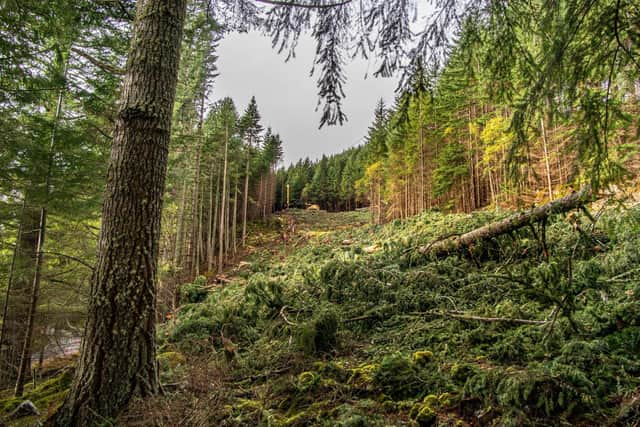Storm Arwen: Climate change should be 'focus' of Scottish tree-planting plans
The call comes shortly after around eight million trees were flattened during the deadly Storm Arwen last month, which claimed three lives across the UK, caused widespread travel disruption and saw thousands of families left without power for several days.
Initial estimates suggest at least 4,000 hectares of woodlands across Scotland were damaged during the storm, which saw eastern parts of the country battered by winds reaching up to 100mph.
Many popular forests were closed for public safety reasons.
Advertisement
Hide AdAdvertisement
Hide AdThe impacts were exacerbated by Storm Barra, which followed shortly after Arwen.
Climate scientists have predicted an increase in extreme weather conditions as global temperatures rise, including heatwaves, droughts and floods.
Winter storms are also expected to become more frequent and more severe.


According to national agency Forestry and Land Scotland (FLS), the industry must adapt their planting plans to limit the destructive impact of storms like Arwen.
In a single night the gales felled around a third of all the trees in national forests which were due to be cut down for timber over the next 12 months.
The most intensive damage was reported across the Borders and East Lothian, stretching into Galloway, while another swathe of devastation runs through Banffshire, Aberdeenshire, Kincardineshire, Angus and into Perthshire.
FLS has warned that trees in some places will be particularly vulnerable to the impacts of climate change, including some of the large upland forests planted in decades gone by.
Modern techniques include planting a greater mix of species to create a patchwork of conifers for timber and native broadleaf trees – moving away from monoculture plantations of the past.
Advertisement
Hide AdAdvertisement
Hide AdThe technique can improve resilience, providing greater protection for forests, by dissipating wind gusts and stabilising soils.
Planting trees at different stages of a forest’s development to create variation in the heights of specimens within a woodland, can also help disrupt the destructive force of strong winds.
FLS chief executive Simon Hodgson said: “The damage to forests caused by Storm Arwen should be seen as a shot across the boughs, giving us notice of what we might have to contend with in the years to come as the climate changes.
“The Met Office headline for future climate prediction is a greater chance of warmer, wetter winters and hotter, drier summers.
“Although we will be dealing with the impact of November’s storm for months, and even years, to come, it is a timely reminder that we are right to pursue forest adaptation.”
FLS is already working on long-term adaptation projects.
These include a felling and replanting programme at Loch Ness, which will see tall mature conifers at risk of falling down steep slopes along the A82 removed and replaced with suitable alternatives, and creation of new woodlands that will help stabilise the hillsides along the infamous Rest & Be Thankful route in Argyll.
Both schemes will help reduce landslips and offer greater protection for vital transport links, power lines and telecommunications.
A message from the Editor:
Thank you for reading this article. We’re more reliant on your support than ever as the shift in consumer habits brought about by coronavirus impacts our advertisers.
If you haven’t already, please consider supporting our trusted, fact-checked journalism by taking out a digital subscription.
Comments
Want to join the conversation? Please or to comment on this article.